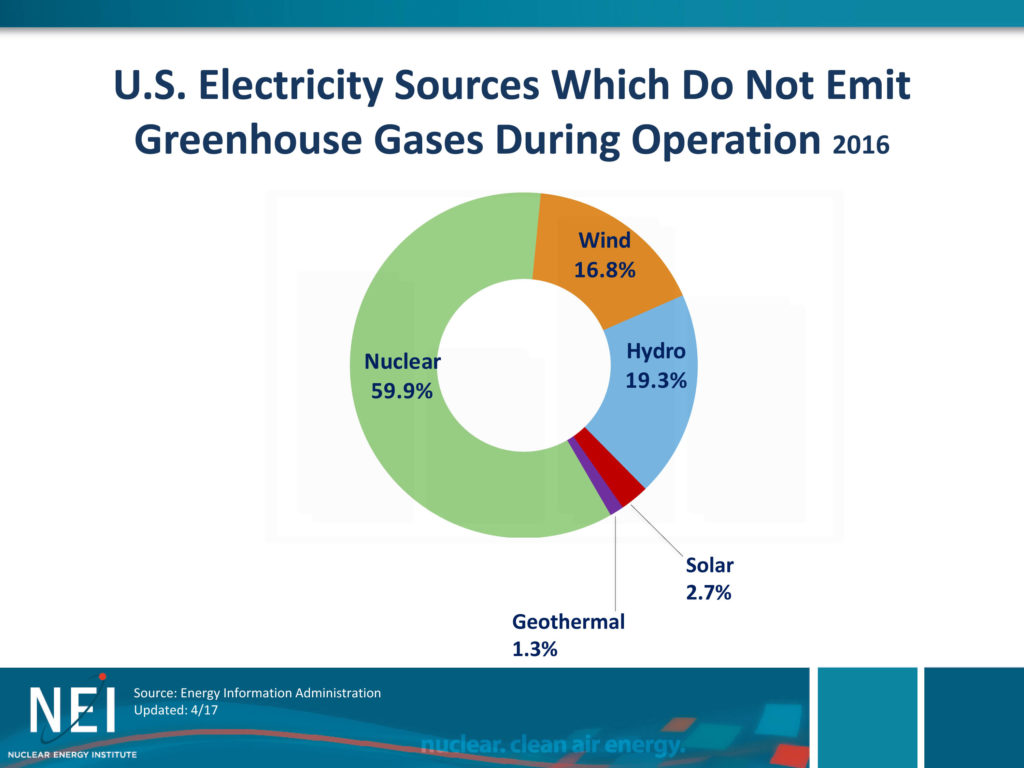President Trump, with his fossil fuel fantasists in tow, made it official Thursday, announcing that he would pull the United States from the Paris climate change accord in order to “make America great again.” The administration’s inability, as well as that of most of the Republican Party in general, to come to grips with climate change is sad, but that will have to wait for a future post. The issue at hand is the decision’s likely negative impact on the U.S.’ already-battered nuclear and coal industries.
For years the nuclear industry has been making the case that it was vital to the country’s climate change mitigation efforts because of its emissions-free generation profile. While accounting for just 20 percent of the nation’s annual electric generation, the industry noted ad infinitum, it was responsible for 60 percent of the carbon dioxide-free emissions (see chart below). In a carbon-constrained world, that would be a valuable attribute. But the Trump administration has now made it clear that it places no value on CO2-free generation sources.
That, in turn, could be a major problem for the industry, as the effort to secure nuclear subsidies—successful so far in Illinois and New York (although now tied up in court), still pending in Ohio, Connecticut and now Pennsylvania—has relied in large part on the sector’s glowing greenhouse gas attributes. In an interesting twist, just before the administration’s head-in-the-sand announcement, Chicago-based Exelon said it would close the 837-megawatt Three Mile Island nuclear reactor in late 2019 because the facility couldn’t compete in the PJM electricity market, which sprawls across 13 states and the District of Columbia. The company largely blamed the market’s structure, including its failure to reward the plant for its emissions-free generation, for its decision to shutter the plant.
Continue reading Trump Paris About-Face Likely To Hurt, Not Help Nuclear, Coal Sectors

 Follow
Follow